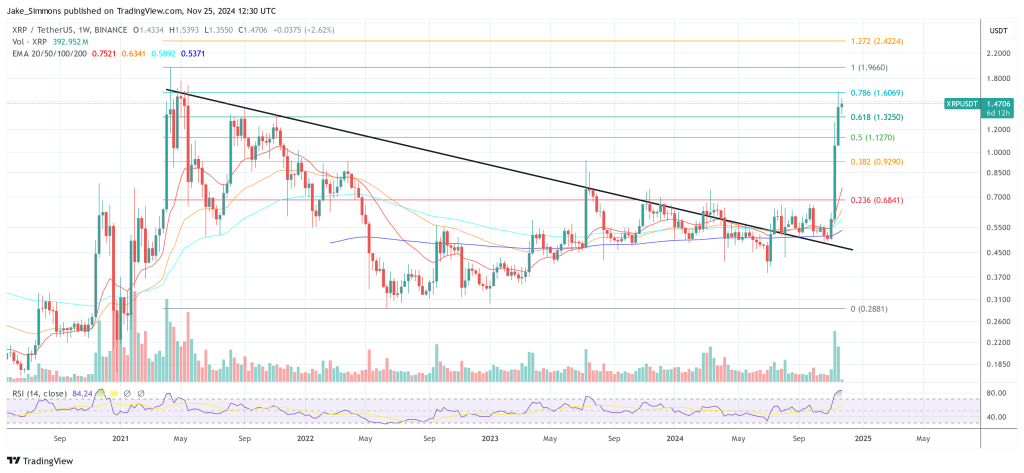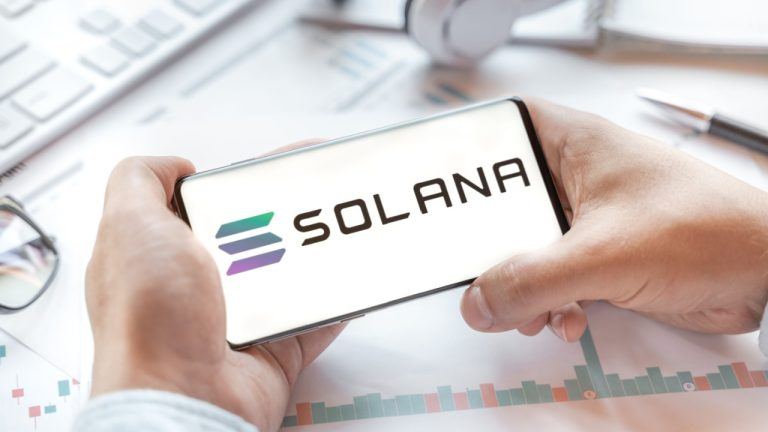When you get right down to it there are only a few sources of yield in Defi.
1) Lending. e.g. Compound, Aave.
2) Liquidity. Fees from trading + LM rewards. Automated by Yearn, Convex, etc.
3) Insurance. Fees from staking in which your money is a backstop against lost funds from users e.g. Aave, Alchemix v2.
4) Voting. Fees given to active voter participants e.g. KNC.
Of these there are numerous platforms devoted to the first two, a few Defi 1.0 protocols that apply internal implementations of insurance, and barely anything for voting. XToken at its core is a platform that automates and auto-compounds insurance and governance yields. As Yearn and Tokemak are to liquidity, XToken is to insurance + governance.
I view it as inevitable that over time we see more and more platforms adopting the Alchemix and Aave model where staked funds provide insurance. I think we’ll also see the rise of bonded voting as a direct source of yield for voter participation. These are necessary services for DAOs, yet today insurance and voting rewards are either lacking, non-existent, or dysfunctional. So, given that I view this as an inevitable trend and that there is only one platform I’m aware of even attempting to solve it, it’s probably worth having a closer look at it. So, here’s a deep dive into how XToken works, what their plans are, and where I see them going.
Delegated Voting
To start with, let’s talk about delegated voting today. Our ecosystem’s solution to this is entirely inadequate. Outside of a few notable DAOs like Curve, voter participation is an abject failure. There are only really two good solutions to this:
1) Pay voters.
2) Delegation.
I have a separate post I’m writing about futarchy governance mechanisms but let’s consider the problems with delegation today. First, not every DAO supports delegated voting and even when they do the implementation is often inconsistent. Second, for some DAOs being able to vote requires locking your funds. Worse still, this lock doesn’t even always return an LP token. The result is a smooth Defi Lego that loses composability with the rest of the ecosystem. Third, even when there is an LP the moment you try to use it in Defi the delegated voting power is lost. For example, if you delegate your vote with your governance tokens and then put them into a Uniswap LP, does the delegated vote still apply? What happens when someone buys them? Does your delegate status carry over? How about if you deposit them to Compound and someone borrows them? These are critical problems for Defi that XToken is aiming to solve. They do this by providing a separation of concern between the capital and the voting power behind it through their xAsset system.
xAssets
When you deposit governance assets to XToken you receive an xAsset. Functionally this is equivalent to something like cETH. xAssets are interest bearing because they collect and compound staking and voting rewards.
So how do they separate their capital value from their voting power? Well, the xAsset is worth however much of the underlying asset you can claim is worth. This is enforced by arbitrage. This keeps the capital power of your governance token in your control as long as you control the xAsset and it can either be redeemed or sold. Meanwhile, the underlying governance asset is actively managed in a voting contract. The trick to delegation when delegation isn’t actually supported by a protocol is to grant voting access to tokens via a function call without granting withdrawal access by the voter.
This leads us to the question of who directs the voting power of those assets. At the moment they use this abstract “mandate” system. By abstract I mean there’s no way to objectively, deductively go from the mandate to a vote for every single issue. At some point there is a trusted person like a courtroom judge who has to interpret the mandate (law) and vote according to it. While I haven’t encountered any controversial votes by the XToken team I think the mere presence of this trusted entity implies an inevitable endgame with known celebrity “Defi Senators” acting as voters instead of the XToken team. Their objection when I’ve asked about this is it would fragment liquidity amongst numerous xAssets (e.g. xKNCa, xKNCb). However, it’s possible to combine multiple delegates under the same xAsset. To do this they add a step when you mint your xToken to delegate your voting power to a particular voter. The pooled tokens are then split into a separate deposit addresses per delegate and the voting power is retained by that delegate until the xAsset moves to another externally owned account (EOA). If there’s ever ambiguity on where the voting power should reside the tokens can be moved to a backstop address that votes according to the existing mandate (XToken team’s directive). It’s a simple manageable change in my opinion, and one well worth pursuing.
So where does the income come from that makes xAssets interest bearing? Well, from the DAO of the governance token in some form. The most common form of this income at the moment is staking as a protocol insurer in exchange for a share of the protocols revenue. However, tokens like KNC already directly tie protocol rewards to voting and nothing makes these two revenue streams mutually exclusive. How much revenue are we talking about here? It varies by protocol obviously, but for reference xAAVEa is at about 5% meanwhile xBNTa is currently clocking in at 52% APY. At 52% passive APY an asset doesn’t have to go up by much in order to be worth holding. It just needs to not go down.
xAssetCLR
Often enough, when tokens are earning staking/voting revenue those tokens are time locked into a staking contract. This prevents everyone from exiting if a hack occurs and frontrunning the DAO selling their assets (you know, as part of actually being an insurance provider). Under more normal conditions however, xAssets have the benefit of instant exit liquidity. This comes in two flavors, the first being small percent of the deposited funds held in reserve for withdrawals. The second being xAssetCLR pools. While the name is fancy, it’s just a managed Uniswap v3 pool that contains the xAsset and the base asset, e.g. xBNTa/BNT, and they manipulate the range on that pool to retain a desired balance between them, e.g. 25%/75%. So why does someone provide liquidity to this pool and forfeit 75% of the revenue they would have for just holding more of the xAsset? Short answer, liquidity mining.
This leads to the interesting question: how does insurance work when you can exit with your capital before the DAO can liquidate your staked assets? That’s quite a conundrum. Who actually loses money? Who is actually the insurer? Well, there’s a bit of a race condition.
1) Anyone who is in the xAssetCLR pool is essentially buying the xAsset and selling the (unstaked) governance asset. This will quickly deplete the liquidity on the xAssetCLR pool. The LPs that don’t remove their liquidity from Uniswap in a hurry are the ones actually serving as insurance.
2) Next your base xAsset holders and any CLR LPs who are fast enough to exit their positions now have xAssets they need to hot potato. They can either sell into any remaining liquidity to get the base asset or they can redeem the xAsset using the reserve.
3) Anyone still holding an xAsset when the reserve depletes and Uniswap v3 range liquidity depletes is stuck holding the bag just like if their funds were staked directly. Sucks to suck.
The good news is holding an xAsset at least gave you a chance unlike directly staking. This opens the door for another layer of xAsset manager to hold your xAsset in escrow and who is prepared 24/7 for hacks to occur to race to the exists before you, dear bagholder, are affected. Think DefiSaver, but for governance assets.
Now obviously, these are some big risks being taken by the CLR LP’s. Commensurate with that are outsized rewards. Typical staking rewards are in the 5-10% range. The xAlphaCLR pool is currently providing, checks notes, 199% APR. Someone dilute that already, that’s ridiculous.
xU3LP
Due to the appreciating nature of xAssets there will be a continual divergence between the price of the xAsset and the governance token. This makes the pair unsuitable for Curve. But these pools would also be a poor fit for Balancer or Uniswap v2 because their x*y=k model would severely underutilize the liquidity they’re paying for. This is really where Uniswap v3 shines and that’s why the CLR pools were built on it. XToken built is an active liquidity management system just like Visor. They rebalance the price range on the Uniswap v3 position periodically to keep the balance of assets in alignment and ensure there is liquidity in both directions. Then, since they had to build this anyway they might as well offer a managed solution for simple like-kind asset pairs on Uniswap v3. Basically they built a Curve style system on Uniswap v3. That’s xU3LP: xToken Uniswap v3 Liquidity Provider. It was a gap in the market they took an opportunistic grab at that in my opinion is greatly underappreciated.
Seriously, the yields here are higher than they have any right to be. Take the xU3LPc pool which tries to keep a 1:1 parity of sUSD and USDC. It’s basically $ exposure, has been making 9.14% on trading volume which about triple what Compound offers on stablecoin lending, and then has an LM program offering 29% on top. Over 35% APR on without price volatility risk? Mmmff. You can’t see it but I’m biting my lower lip because that’s so sexy. The next best thing I’m aware of in that category is Convex MIM which is at 19.14% on mainnet or the Pickle farm at 26.02% on Arbitrum for those who want auto-compounding. Unimpressed? Want ETH price exposure? How about 23% APR for an ETH/sETH pair? As I said, underappreciated.
Unlike the xAssets, these have no governance rights. They just built it because it was low hanging fruit, an easy extension of something they did have to build that brings in additional revenue.
XTK
That brings us to the point of revenue and the XTK token itself. The XTK token is one of those staked governance/insurance tokens I keep mentioning (so meta). You get paid to insure the protocol against future hacks. So where does the revenue come from for that?
1) A 1-3% fee on compounding harvests.
2) A 0.2% mint fee on xAsset creation.
3) A 0.2% burn fee on xAsset redemption.
Overall quite fair compared to Yearn’s 20% fee on compounding gains + 2% principal per year or Harvests 30% fee on compounding gains. Despite the low fees there’s currently a 15.64% APR going to XTK stakers from those rewards. This is in addition to the LM rewards of 52%. A 15% staking APR is a damn promising start to any ecosystem if it can be sustained.
I’d like to emphasize here that you are accepting risk as a protocol insurer for this revenue. XToken has already been hacked, twice. It’s not the greatest track record tbh. While there’s a lot of things here I think are worth paying attention to, buyer beware. The price is down 95% from the high because of these hacks and there is no guarantee going forward. While they’ve acted honorably to those who lost funds in the past, their staking module wasn’t online when the last hacks happened. This time XTK stakers are explicitly on the line instead of the XToken DAO treasury.
In terms of risk isolation as an insurer, staking in XTK is based on module. Everything discussed above is under the xToken management module. As they build out their vertically integrated stack (discussed soon) you’ll be able to isolate your risk as an insurer to particular parts of the system.
xLend
That roughly brings us up to present day. Let’s talk about what’s up and coming. XLend is their answer to the equivalent of Impermax. They are creating their own money market that will allow xAsset holders to take loans using their xAssets, either for regular borrowing or to take leveraged positions with price exposure to other assets like ETH. The primary advantage of making your own money market is you get to set the rules. In this case, they seem to be planning to do something special with the liquidation mechanics. I don’t have the full details, but I thought it was worth mentioning. On the surface it feels like they’re playing with gasoline here, but I’ll withhold judgement until they post the full details.
With that out of the way I’d like to provide some context on Defi 2.0 lending protocols. If you’ve been living under a rock recently Alchemix v2 and Abracadabra are differentiated from their predecessors in that they enable loans using interest interest bearing collateral, enabling greater capital efficiency for users. In Alchemix v2 (lovingly called Altchemix) they’re going to be adding more alAssets and supporting different collateral assets including interest bearing assets like rETH and Curve LPs. Similarly the recent success of Abracadabra can largely be attributed to the fact that users can generate loans using collateral such as yvSTETH and cvx3pool. As I point out above, xAssets are a new class of interest bearing asset. I don’t see xAssets on Abracadabra yet, but why not? As long as the liquidity depth for the xAsset is sufficient for liquidations it should be fine. Similarly, if Alchemix is accepting a Curve sETH/ETH position as collateral for alETH, why not an equivalent managed Uniswap v3 LP token? That plus the xLend program should create a lot more demand for the xAssets which I find exciting for a protocol that is already probably undervalued due to hacks.
Final Thoughts
I’ll just briefly list out some more things without expounding. They’re apparently getting into creating xAssets for real estate, there’s an NFT platform in development, a slew of new xAsset and xU3LP options, more staking modules, and a recent $2M fundraise to pay for continued development. They seem intent on powering through their previous mistakes and have respectable grit.
If I had one criticism of the XToken team it’s that they seem intent on doing everything themselves. Vertically integrated is synonymous with do everything yourself. Unlike most successful Defi protocols they haven’t focused on forming partnerships. Rather than work with Visor, they made xU3LP. Rather than make a Rari fuse pool they are making xLend. There are protocols that enable leveraged trading already but they are aiming to do it in xLend themselves. I haven’t seen outreach with Abracadabra to get xAssets added there. I haven’t seen outreach to Alchemix but maybe it would be premature. I only recently saw them reach out to Olympus DAO to setup bonds for their XTK/ETH pair and no mention of bonds for the CLR pool liquidity. The result of this shows in their adoption. Partnerships aren’t just to reduce work, they serve as a form of outreach to other communities, effectively marketing, and create those (3,3) relationships that bring more people on board both protocols. This recent marketing push of theirs that motivated me to write all of this (Threadoor) is a great opportunity to reach out to them if you see opportunity for collaboration. At the end of the day, there is no one else trying to serve the niche they are. It’s an essential product that addresses a major failure of this ecosystem to date. I’m praying for their success, for all our sakes.
[link] [comments]

You can get bonuses upto $100 FREE BONUS when you:
💰 Install these recommended apps:
💲 SocialGood - 100% Crypto Back on Everyday Shopping
💲 xPortal - The DeFi For The Next Billion
💲 CryptoTab Browser - Lightweight, fast, and ready to mine!
💰 Register on these recommended exchanges:
🟡 Binance🟡 Bitfinex🟡 Bitmart🟡 Bittrex🟡 Bitget
🟡 CoinEx🟡 Crypto.com🟡 Gate.io🟡 Huobi🟡 Kucoin.



















Comments